The rapid rate at which businesses are adopting digital technologies calls for sophisticated network infrastructures that are scalable and can perform exceptionally well. With businesses focusing on smarter connectivity to bolster creativity and efficiency, it has become exceedingly important to choose the right networking solution. Introducing Aruba Switch, a network solution within the suite of HPE networking solutions that is renowned for its versatility and advanced features. This document aims to furnish you with sufficient knowledge on how Aruba Switch can transform your network from improving operational efficiency to providing exceptional user experiences. IT personnel seeking to enhance infrastructure performance or business executives looking to gain a competitive advantage will find this blog helpful in understanding the scope and impact of Aruba Switch on modern enterprise networks. Keep reading to learn what differentiates Aruba Switch and the features that can be leveraged to its fullest.
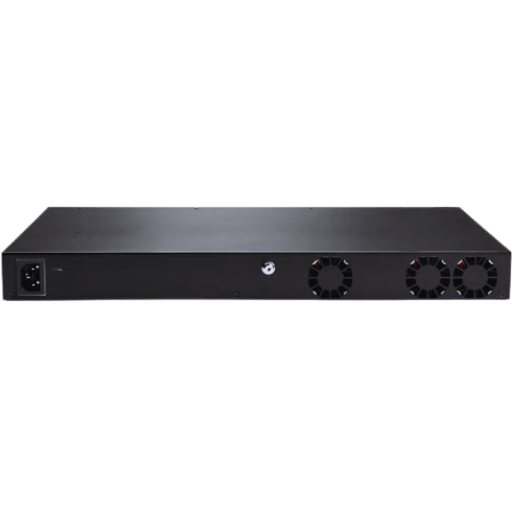
The Aruba Switch is a next-generation solution designed for networking connectivity in an enterprise environment. The Aruba Switch facilitates everything from data optimization, and resource management to inter-device communication within a given network. Aruba switches have advanced intelligent traffic management and security feature integration along with scalability to cater to the growing needs of modern businesses. The increasing mobility performance requirements of different organizations worsen this situation, but these switches can be easily integrated into existing frameworks seeking enhanced productivity which makes them a much-needed preference.
The Aruba Switch is created for optimal network functionality, dependability, and security. Aruba switches make data handling very effortless because of their seamless device-to-device communication, ensuring minimum delays. These devices have support for advanced traffic control facilities, such as VLAN partitioning, strong security protocols for unauthorized access, and flexibility to adapt to organizational growth. Aruba Switches can be implemented into many types of network configurations effortlessly which makes them ideal for companies looking for simple but very efficient performance.
Modern businesses have ever-evolving needs, which are addressed by HPE Aruba Networking’s tailored solutions that strive to maximize connectivity efficiency. Aruba solutions use AI-powered insights to provide proactive network surveillance, automated troubleshooting, and optimization, guaranteeing performance in even the most demanding situations. For instance, Aruba’s AI-based platform analyzes network activity patterns and modifies configurations to maintain sufficient bandwidth allocation across devices.
Aruba is pioneering the way with its Wi-Fi 6 and planned Wi-Fi 7 technologies, which will solve new issues related to connectivity. Wi-Fi 6 enables rapid data transmission, lower congestion, and more efficient power consumption, making it optimal for use in densely populated areas such as offices and other public spaces. This new standard also enables transfer rates of up to 9.6 Gbps, which greatly improves wireless network capabilities, allowing organizations to cater to the increasing population of mobile and IoT devices.
With security being of utmost concern, Aruba provides sophisticated tools such as Aruba ClearPass and Aruba Zero Trust Security. ClearPass enforces identity verification of the endpoint and role-based access control policies while Zero Trust Security mitigates potential breaches by verifying users and devices throughout the whole enterprise. These approaches reduce vulnerabilities and ensure compliance with strict regulatory measures.
Moreover, Aruba Central offers network automation solutions that help organizations manage and administer remote networks from a single location. IT personnel can provision, set up, and fix network equipment with ease, lowering the level of effort needed to manage systems while increasing scalability. Aruba’s cloud-based solutions work with major independent vendor applications, which makes use of existing infrastructure easier Aruba utilises a robust and proactive strategy to transform connectivity by providing reliable, secure, and flexible solutions designed for today’s digital era. Their strategy also ensures scalability. Arubas technology enables users to create innovative systems across various fields while improving user experience whether it is supporting semi-remote working models or expanding IoT networks.
Aruba Central has emerged as a powerful cloud solution for the management of complex networks in a distributed system. It fully integrates AI-powered advanced analytics with monitoring to provide effortless functioning for enterprises of all sizes. IT teams can now manage wired and/or wireless networks along with WAN infrastructure from one pane of glass. This enables them to automate complex network configurations without losing system performance; thus, meeting the growing demands of business.
Aruba Central offers many innovative services, one of which is AI-powered insights that foresee problems on the network and solve them proactively. For example, many organizations that have deployed Aruba Central report a 90% reduction in meantime-to-resolution (MTTR). This is made possible by the exceptional enablement support with Aruba switches. In addition, automation of routine tasks such as firmware and policy updates along with configuration changes also increases productivity.
Alongside security, these solutions empower organizations to mitigate risks with integrated role-based cyber and real-time threat monitoring and SASE (Secure Access Service Edge) integration. This helps safeguard enterprise data during the entire lifecycle and ensures compliance with the legal regulations in place.
The differentiation scalability features Aruba Central above its competition. It helps businesses operating thousands of locations and devices to expand effortlessly without complication due to Aruba products’ user-friendly interface. Usage graphs and customizable reports assist in analyzing performance optimization, identifying usage trends, and aligning the IT frameworks with organizational objectives.
With more than 100K incorporated active installations of Aruba Central, the platform is still receiving more recognition for its dependability and ease of use, which helps to accelerate digital transformations for businesses of all scopes. From establishing hybrid workplaces to integrating global IoT systems, Aruba Central continues to be a focal point in the management and security of next-generation networks.
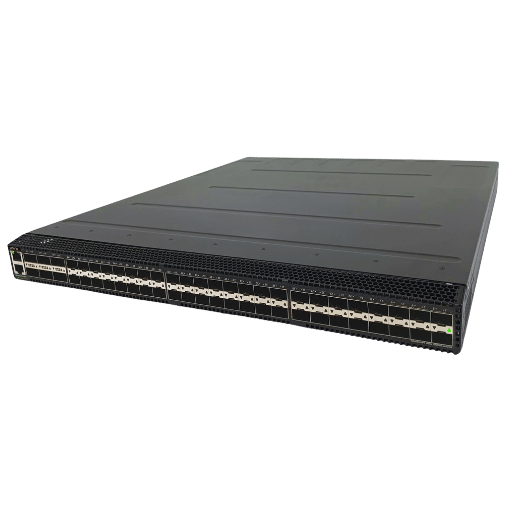
Aruba’s networking solutions are tailored to ensure optimal network efficiency and performance to help businesses meet the requirements of today’s highly connected world. Manual network management is enhanced with automation which improves reliability, lowers latency, and guarantees connectivity for enterprise applications. According to a report, 70% of surveyed companies reported increases in operational efficiency after implementing Aruba cloud-managed networking systems.
One distinct feature has been Wi-Fi 6 and Wi-Fi 6E technologies. With their higher speeds, lower latency, and greater capacity to support dense environments like offices and schools, these technologies aid in the relocation of network management. Organizations are now able to support larger numbers of IoT devices without the need to worry about performance quality.
Automation of network monitoring and management is greatly enhanced by the Aruba NAE, improving uptime and reducing operational costs. Research indicates that enterprises utilizing NAE can troubleshoot issues 25% more efficiently. This is especially beneficial to organizations with large, complex, and distributed networks.
The integration of modern technologies and management tools such as Aruba Central, and HPE Aruba Networking makes it simple for organizations to design agile, secure, and robust digital networks. These technologies provide the foundation for breakthrough idea creation while ensuring a sustained edge over competitors in fast-changing markets, particularly through the use of HPE Network’s instant technologies.
Amid the increasing reliance on the internet, integrating wireless access points (APs) into existing network infrastructures is imperative to guarantee a seamless connection for users. Implementing HPE Aruba Networking solutions is effortless, as they utilize the latest Wi-Fi 6 and Wi-Fi 6E hardware. These standards are highly suitable for high-capacity environments, such as enterprises, educational institutions, and public venues, as they provide increased data rates, capacity, and lower latency.
Apart from providing centralized management that enables remote network configuration, monitoring, and troubleshooting from any location through the platform, Aruba Central gives IT teams other efficient tools at their disposal. Aruba wireless APs feature intelligent AI capabilities such as RF optimization and interference avoidance, which guarantee dependable performance. Industry benchmarks reveal that Wi-Fi 6E expands the usable spectrum with the addition of the 6 GHz band, allowing network speeds of up to 9.6 Gbps and, therefore, enabling unhindered streaming, conferencing, and data transfer activities.
These access points have holistic security measures in place such as WPA3 encryption and integrated threat detection to defend against possible breaches. Additionally, advanced architecture for power efficiency provides energy savings on devices and prolongs battery life. To maintain scalability, HPE Aruba Networking allows businesses to effortlessly enhance performance and security to meet current and future requirements. This combination of cutting-edge technology and user-friendly administrative approaches transforms wireless networking to serve the ever-changing modern digital ecosystems.
The deployment of Artificial Intelligence (AI) in technology has greatly enhanced efficiency and automation in modern wireless systems. Network issues within HPE Aruba Networking are detected automatically with the integration of AI-powered features and Predictive analytics, which, according to industry reports, lessen network downtime by 50%. AI is now capable of adjusting in real-time to changes in network activity as well as automated optimization of bandwidth, providing improved performance in HPE Networking Instant Solutions.
AI-powered troubleshooting is one of the more unique capabilities that utilizes machine learning algorithms to quickly analyze and discover the root cause of connectivity challenges. This capability significantly decreases mean time to resolution, creating continuous business operations and improved user experience. Furthermore, AI improves network access control, device classification, and connection compliance, enabling secure policy-compliant access without a lot of manual effort.
AI-powered automation integration also allows the systems to scale as resources are automatically reallocated to areas facing increased demand. A recent survey indicates that 35% of enterprises that adopted AI solutions for networking reported improved operational efficiency and reduced IT burden. These innovations demonstrate the influence of AI on the future of networking and how businesses can transform seamlessly with enhanced performance, security, and reliability all with reduced complexity.
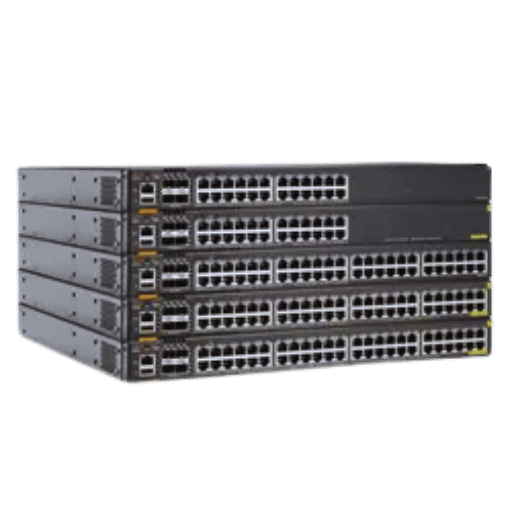
The Aruba CX Switches are designed to seamlessly integrate intelligent automation, robust performance, and advanced scalability to meet the demands of enterprise networks. Remarkably, these CX switches utilize the Aruba AOS-CX operating system which is modernized and cloud-native. Because stability and responsiveness are paramount, Aruba’s AOS-CX employs a microservices architecture, ensuring faster IT integration, and providing resilience against dynamic IT environments.
An additional feature is the Aruba CX Network Analytics Engine (NAE). By leveraging automation and real-time analytics, NAE elevates the network’s automation capabilities and empowers IT teams to identify and fix impending network catastrophes proactively. Recent data shows that networks using integrated switch analytics experience a dip in downtime, with some companies achieving up to 50% decrease in mean time to resolution (MTTR).
Moreover, Aruba CX switches have advanced hardware capabilities enabling greater connectivity and scalability. For example, the CX6400 and CX8325 models offer 25GbE, 40GbE, and 100GbE ports that satisfy the bandwidth requirements of high-performance applications like cloud computing and data center interconnects. Additional features include flexible deployment and optimal energy efficiency, factors that are crucial to many enterprises today.
Also, Aruba CX switches enable high levels of customization with industry-standard REST APIs and Python scripts making them trivial to configure for most developers. Such tailorability allows IT staff to optimize network processes to particular organizational requirements, facilitating efficiency within business workflows and system integration.
Security is yet another primary feature of the CX series. They come with advanced encryption as well as role-based access control (RBAC) integrated alongside threat detection and response. A cybersecurity report indicates that networks using these measures had more than 30% fewer attempts at breaching security protocols.
CX switches are also made easier to configure and deploy with Zero Touch Provisioning (ZTP) and centralized management via Aruba Central. These features provide businesses with the flexibility to rapidly scale up while reducing the need for manual configuration, lowering the time to deploy switches by up to 60% compared to conventional solutions.
Integrating the latest features and extraordinary reliability, Aruba CX switches offer an unparalleled solution for businesses seeking to improve their network infrastructure in anticipation of future IT requirements.
Business operations have been greatly improved by HPE Networking due to their prompt-on technology, which removes any lag waiting for the network to be configured which improves productivity. This advancement in technology minimizes the amount of time spent on resolving technical issues, so more resources can be allocated to strategic business initiatives. Technology infrastructure is seamlessly integrated with Aruba products, which delivers powerful performance and allows the company to confidently scale to meet operational requirements.
Scalability and flexibility are defining features of the Aruba CX Series, which makes it a suitable option for unstable and changing network environments. Its modular design enables the effortless addition of components, so companies can increase the size of their networks without degrading performance. Furthermore, the series is developmentally scalable, which is crucial for on-prem/cloud environments’ adaptability and IT strategy foresight by 2025. This allows network infrastructure adjustment for business growth and demand.
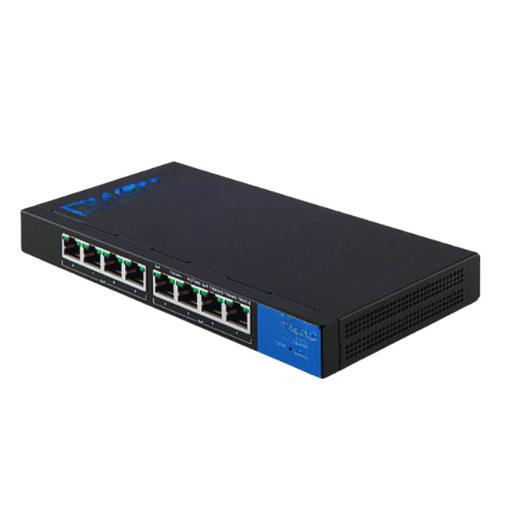
Network Size and Scalability
Understanding the current scale of your network, as well as estimating future requirements is critical. You can choose from small business, mid-sized enterprise, or large organization categories with Aruba, ensuring these fit your current and future requirements.
Performance Requirements
Evaluation of your applications’ performance requirements is important. Analyze the specifications of throughput, bandwidth, and latency to make sure the unit will perform optimally under peak workloads.
Deployment Model
Select between on-premises and cloud-managed deployment models according to your business strategy. Aruba provides both types of solutions, which are easily manageable and controllable from any environment.
Security Features
Make consideration for advanced security capabilities like intrusion detection, data encryption, and device authentication. Aruba switches and access points incorporate strong security features that protect critical business information from unauthorized access.
Budget and Cost Efficiency
Be sure to choose what will economically equal your budget but will also provide value in the long run. Many features, including energy efficiency and easier management, will help cut down operational costs in the long term.
Integration and Compatibility Keeping in mind the ease of use across various networking environments, Aruba products were designed with these features in mind.
Ensure the selected product meets the compatibility requirements of your existing infrastructure. Aruba products are adaptable and designed to seamlessly work with various network architectures and other systems.
Thoughtful consideration of these factors will help you select the Aruba solution that best addresses your network’s requirements and goals.
About Netgear and Aruba network solutions, distinguishing between their performance, scalability, features management, and scope serves as a baseline starting point. Although both companies provide powerful networking solutions, they differ in the problems and aspects they address which makes their offerings unique.
1. Performance and Hardware Capabilities
While Netgear does offer an extensive line of products, their primary focus rims around budget friendly options for small to medium enterprises or home offices, unlike Aruba which expands to sophisticated networking within large corporations. Their effortless performance in multi switches, routers, and access points for less demanding environments is unmatched. For instance, Netgear’s ProSafe series is well known for its dependable switches which are trouble-free to set up and come with options that enable up to 10Gbps speed.
Meanwhile, Aruba focuses on delivering high-end networking solutions to businesses and also ensures their routers remain exceptionally fast and scalable. CX series of switches from Aruba includes advanced automation and analytics options allowing large-scale deployments to be managed with ease and simplicity. Their Wi-Fi with AI-powered optimization support, superb speed, and stability make them one of the top solutions for enterprise-grade use cases.
2. Cloud Administration and Scalability Features
Netgear solutions usually target the smooth scalability of SMB`s systems. Insight Managed switches and access points, for instance, have a limited scope of management and control based on the cloud which is ideal for small networks that need basic remote access features.
With Aruba, scalability options allow more flexibility to organizations that are growing or have multifaceted infrastructures in place. Aruba Central, the company’s proprietary management tool developed for and managed in the cloud, provides, in addition to the mentioned features, central resource allocation and monitoring of thousands of devices AI-driven insights which to no other degree can provide comprehensive monitoring. All these features make network performance in large distributed environments possible without the performance drop.
3. Proprietary Capabilities and Perimeter Defense
While active security features comprise VLANs and firewalls which Netgear provides, their products are often simplistic compared to other companies because they are meant for systems with lower security demands. For example, the supported encryption by Netgear products is WPA3 and the only shredding of dataspace permitted is network segment.
Aruba possesses outpacing high level of security features being Zero Trust enabled, NAC, and other tools integration based security with ClearPass for identity and device authentication offer the finest granularity of control. Companies dealing with sensitive data and regulatory compliances find these features the most useful which is why they prefer Aruba.
4. Expenses and ROI
Netgear is popular among customers residing in low-income areas, as their affordability of products is reasonable. Their products provide value for SMBs or home users with basic requirements. However, Netgear’s lack of sophisticated enterprise solutions may hinder growth in the business sector.
Aruba has a much higher initial expense, but their long-term value in enterprise-grade solutions is unmatched, as productivity is enhanced and the operational burden is reduced through automation and centralized management. Also, Aruba reduces operational costs over time with its sustainable designs and energy-efficient policy.
Whether analyzing brand differentiation or market differences, both companies serve their niches. Netgear is more adapted to offering cost-effective and easy-to-deploy solutions in homes and SMBs. Aruba on the other hand, offers enterprise-grade solutions to businesses looking to achieve unmatched network performance, security, and scalability.
For almost any use-case scenario, there exists a budget, desired feature set, and network size that can be analyzed to establish what brand is best suited for deployment. Netgear is the best option for SMBs that require basic networking at a low cost, whereas more complex needs that require greater security and scalability go to Aruba.
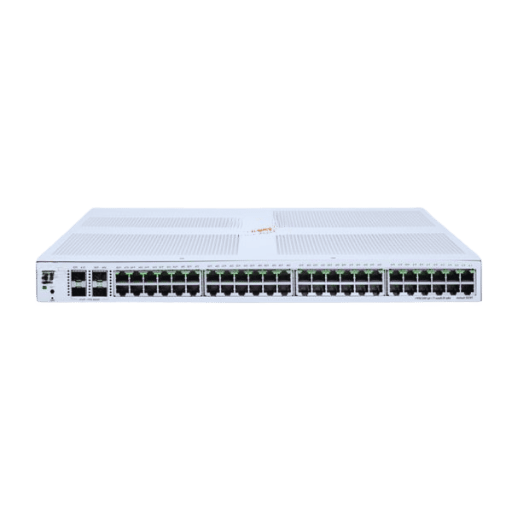
The capability of the HPE Aruba switches is further improved with the use of Power over Ethernet (PoE). PoE technology enables the transmission of both power and data through a single Ethernet cable. This makes device installation easier as there is no need for extra power outlets, which results in lower infrastructural costs. Aruba switches utilizing PoE technology are intended to power IP phones, wireless access points, security cameras, and other Ethernet-enabled devices on the network. Additionally, PoE technology simplifies the installation of network devices in areas with limited access to power, thereby promoting ease of use within modern network environments.
Infrastructure Made Easier
By providing both power and data transmission through an Ethernet cable, Power over Ethernet (PoE) eases the complexity of cabling in data centers. This reduction leads to fewer required power outlets and cables, resulting in a neat setup and improved space utilization. In the case of large-scale data centers, these factors lead to cost savings in both installation and maintenance over time.
Reduced Energy Cost
Modern standards of Power over Ethernet, including IEEE 802.3at (PoE+) and IEEE 802.3bt (PoE++), have become more efficient with power delivery as they now supply up to 30W and 90W per port, respectively. With the increased efficiency, data centers can now power advanced devices like powerful wireless access points and IP-based cameras without separate power supplies. Furthermore, the improved efficiency in power delivery leads to reduced energy resources, therefore becoming more environmentally sustainable.
Increased Flexibility and Adaptability
Rapidly expanding data centers can now take advantage of scalability with PoE-capable switches like HPE Aruba. The addition, relocation, and reconfiguration of devices can be done without new electrical infrastructure, therefore making the expansions more time and cost-effective. This flexibility is vital when responding to changing networking requirements such as increased IoT deployments or growing cloud infrastructures.
Increased Dependability
The integration of PoE into data centers guarantees that essential devices are functional even during power outages when used in conjunction with uninterruptible power supplies (UPS). This feature ensures that power is always available while also preventing downtime, which is critical for business operations today.
Integration for New Technologies
Emerging IoT devices, smart building systems as well as advanced building technologies make PoE critical for modern data centers. For instance, PoE intelligent lighting systems enable both lower energy usage and greater control. Industry analysts expect global adoption of PoE will increase dramatically with more IoT deployments and the development of sophisticated cloud networking infrastructure.
Organizations can now incorporate PoE into the HPE Aruba switches within data center cabinets and enjoy the benefits of increased and dependable connectivity while saving on cost and meeting the energy efficiency demands in this digital economy.
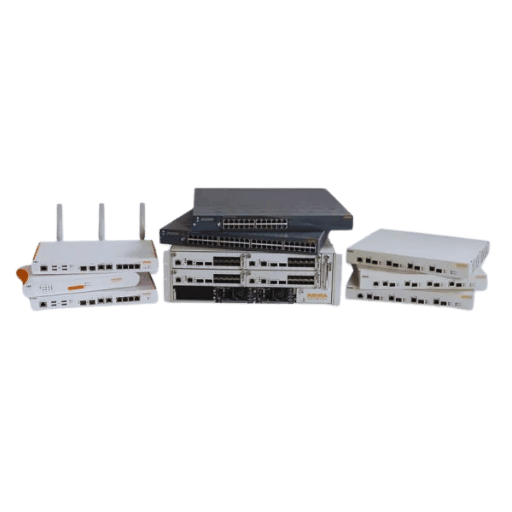
Aruba provides advanced access control and network segmentation strategies using HPE Aruba switches that address security concerns in enterprise infrastructure. Access control is granted through the use of strong authentication mechanisms like IEEE 802.1X, MAC authentication, and captive portals, allowing only authenticated users and devices onto the network. Moreover, Aruba ClearPass enables granular policy enforcement using dynamic role-based access control dependent on user, device, or application specifics.
With regards to segmenting a computer network, HPE Aruba switches employ VLANs (Virtual Local Area Networks) and dynamic segmentation that constrict network traffic flow to mitigate lateral movement in the event of a security compromise. This blocks unwanted movement between sensitive departments or resource groups. From a business perspective, 75% of organizations that have adopted network segmentation for security purposes reported improved containment and detection of intranet threats.
Aruba switches work seamlessly with advanced security systems such as Adaptive Trust Defense, which changes access in real-time based on behavior analysis. For instance, if a device is behaving anomalously while connected, the device can be automatically quarantined or the network can restrict the device’s access to secure the network. These features combine access control with segmentation which improves productivity and the organization’s ability to satisfy compliance with regulations such as GDPR and HIPAA, especially within the cloud-scoped infrastructure.
These underscore the role of HPE Aruba switches as a focal security enterprise network infrastructure component in an era of increasing cybersecurity complexities. With these abilities, organizations can protect their networks efficiently, at scale, and against new threats.
Protection of data is achieved via the implementation of advanced AI-driven analytics, automated threat detection, and dynamic segmentation all incorporated in Aruba ESP (Edge Services Platform). It provides real-time risk mitigation by preventing sensitive data from being accessed in an unauthorized manner and monitored through segmentation. With the incorporation of a Zero Trust policy, access enforcement mechanisms are consolidated with the guarantee that resource-critical interaction is solely done by authenticated and authorized devices and users. Undoubtedly, this enhances the organization’s strategy for data protection while ensuring compliance with regulations such as GDPR and HIPAA.
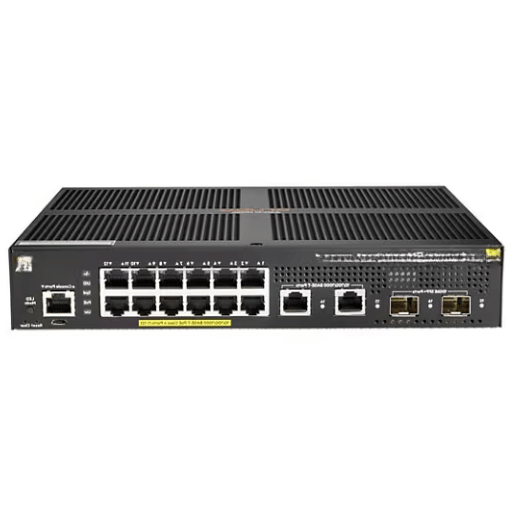
A: HPE Aruba Networking CX switch series refers to a group of multi-functional, cloud-ready switches tailored for enterprise frameworks. These switches excel in automation, programmability, advanced analytics, and a myriad of other sophisticated features, making them perfect for modern edge-to-cloud network frameworks. Port configurations also include scalable gigabit and multi-gigabit Ethernet ports, making them suitable for expanding businesses.
A: Aruba Instant On serves as a family of networking devices tailored for small businesses. It has plug-and-play switches and access points (APs) which can be managed via a mobile application or a cloud portal. Aruba Instant On products simplify network deployment and provision strong security for both wired and wireless devices, including IoT devices, all at competitive pricing.
A: HPE GreenLake serves as a cloud infrastructure that facilitates an as-a-service approach to subscription payment for various IT services specifically Aruba’s networking products. In this case, companies can utilize Aruba switches, access points, and management services in a consumption model, meaning that they pay only when the services are used. It supplants the rigid upfront network deployment cost structures with flexible and scaled network deployments, easing the organization’s capability to adjust network infrastructure to evolving business needs.
A: Even as Aruba’s stackable switches include CX 6300 Series, which performs Layer 2 and Layer 3 switching, their advanced capabilities include: – Up to 48 ports of Gigabit Ethernet or Multi-Gigabit Ethernet Ports – Stacking technology that enhances port density while simplifying management – Highly evolved routing and switching – Combining wired and wireless policy application with Aruba’s Dynamic Segmentation – HPE GreenLake cloud services integration
A: Aruba switches offer network resiliency through: – Hardware resilience with redundant power supplies and fans – Advanced stacking mechanisms that allow for failover – Support for STP and VRRP protocols – Integration with Aruba’s Network Analytics Engine for detection and resolution of issues – Support for software-defined networking (SDN) for agile traffic routing and load balancing.
A: Aruba provides the following management tools for switches: – Aruba Central: An integrated cloud-managed network service – ArubaOS-CX: With automation and API features for programmable policy controls, it is the operating system for CX series switches – Aruba NetEdit: A policy-based configuration tool that easily implements configuration controls on multiple switches – HPE Intelligent Management Center (IMC): A premises-based management platform for multi-vendor networks – Allows usage of other systems through open APIs and other known protocols.
A: Aruba switches facilitate connecting IoT devices with multiple functionalities: – Power over Ethernet (PoE and PoE+) allows the switch to power the IoT devices directly – Integration with Aruba ClearPass allows device profiling and policy enforcement to take place – Support of multiple VLANs enables segmentation of IoT traffic – Built-in security features offer protection from IoT-based attacks – Works with Aruba’s Dynamic Segmentation for policy agnostic management of wired, wireless, and IoT devices
A: HPE’s Aruba switches stand out due to: – Cloud-native architecture allowing seamless connection with multiple cloud services – Higher levels of automation and programmability – Consolidated management for wired and wireless networks from a single console – Collaboration with HPE GreenLake offers flexible consumption-based networking – Enhanced security with Dynamic Segmentation and ClearPass integration – Superior switching capacity and port density – Abundant open standards and interoperability support
1. Assessing the security level of Aruba wireless networks in a certain educational institution
2. Streamline and speed up your VMware infrastructure with Aruba Fabric Composer
3. Programmable Switches for in-Networking Classification